The Wild Geese: Special Edition...
Introduction
Colonel Allen Faulkener (Richard Burton) arrives in the UK secretly in order to meet wealthy industrialist Sir Edward Matherson (Stewart Granger). Faulkener is a mercenary for hire, albeit a little long in the tooth now, and Matherson has a mission in mind for him. In the mysterious African country of Zembala, the current dictator has imprisoned tribal leader Julius Limbani (Winston Ntshona) and Matherson wants him rescued so that the current regime can be overthrown. Faulkener knows of Limbani and knows he's a decent sort so agrees to perform the mission so long as he can get the officers he needs in order to complete it successfully and within a decent enough schedule.
The two officers at the top of his list are Captain Rafer Janders (Richard Harris) and Lieutenant Sean Fynn (Roger Moore), men he trusts implicitly. Janders is a top military planner and tactician but is attempting to 'go straight'. He has a young son from an old relationship and this is his priority now. Faulkener persuades Janders by using Limbani's name; Janders has an interest in African politics and knows this African leader well.
Fynn is a different matter entirely. Fynn has drifted into crime and has been working for the son of a top crime lord. Fynn has a strict moral code though and is pushed over the edge when he is tricked into smuggling hard drugs. Disgusted at what he saw, he makes the son eat the drugs like sherbert, killing him with a massive overdose. This makes dad very angry and a contract is put out on Fynn's life. Persuading Matherson that Fynn is vital, a deal is done with the crime lord just before the contract is completed and the top level of this mercenary unit is almost complete.
Another officer with deep knowledge of Africa is required and Fynn knows just the man; Lieutenant Pieter Coetze (Hardy Krüger), a man who is completely disillusioned with London but can't afford to return to his native South Africa. Coetze has little regard for the majority of native Africans, believing that Africa only prospers due to the efforts of the White man, his only motive for joining the mission being the money that will enable him to buy his own farm.
Recruiting 50 men, Faulkener and co. move to Swaziland to be beasted into shape by RSM Sandy Young (Jack Watson) before parachuting into Zembala from a Hercules aircraft. Their initial mission goes without a hitch or loss, but things get complicated when Matherson does a deal with the corrupt African leader of this country and scrubs the mission leaving the mercenaries stranded. They now have to hot tail it across this African country in an attempt to find a way out of Zembala, all the while with the vicious Simba regiment on their tails.
Visual
This is a superb print from Arrow Films, I couldn't see any artefacts on it all and hardly any grain.
Extras
A slightly different mix of extras this time round, a little surprising but also quite pleasing.
The newsreel footage of the Variety Club premiere for the film is clearly dated but amusingly so, shot in an era before the faux glamour of the Age of Celebrity, so you see people who look their age and enjoying themselves gracefully rather than trying to look as if they're in their twenties.
The main featurette is a long piece on producer Euan Lloyd. I'd assumed from the title that Mr Lloyd was no longer with us before I realised that he was on the commentary included as well. It's a very interesting piece that explores how his career in the film business started and developed, it seems that in this industry more than others, it's definitely who you know that gets you on. It's rare that you hear much about producers, but I really enjoyed this.
Overall
Burton, Moore, Harris and Krüger. What a combination. And what a film. The Wild Geese has been a long-standing favourite of mine since I first saw it many, many moons ago. It just seemed so authentic, and this is almost certainly due to the richness of the source material and the input of real mercenaries as technical advisors. The chief input was from Colonel 'Mad' Mike Hoare, a very famous Irish ex-mercenary, but he also had help from at least one colleague of his, Ian Yule who picked up a role as Tosh Donaldson.
Africa was long thought to be a dark uncontrollable continent, it still is to a large degree, with Dictators coming to power and slaughtering their people in their thousands before being replaced and then the process starting again. The use of the Limbani character and the interaction with the South African character played by Krüger is an omen of what was later to come in South Africa with Nelson Mandela, although this was clearly a rather simplistic message with a quick conversion from hostility to a desire to work together from Krüger's perspective.
There has long been criticism of the age of the mercenaries depicted in this film. Some such as John Kani's Sgt Jessie are quite young but the majority are aging men out for one last hurrah. Despite the criticism, this is quite realistic as this is based on real mercenaries who couldn't settle back into civilian life after the Second World War. When you consider that the average age of a soldier is around 19 to 25 then the 33 year gap to 1978 (assuming the year is accurate) makes these soldiers in their late fifties at least.
As usual with any military films, there are a couple of gripes that always get me as an ex-soldier (albeit technician in the Royal Signals rather than a front-line infantryman). The first, that I always pick up and detest, is the inability of actors to shape their berets correctly. This is a matter of pride for most soldiers and these old veterans would not have been an exception, regardless of how long they'd had them. Some of these berets look so flat you could land a helicopter on them. The other thing I don't like is the mixing of beret colours and regimental badges. Brown berets and Para badges, don't think so. One pleasing thing that I only noticed on this viewing is that a few of the mercs are wearing the cap badge of the SAS, and this was a time when the SAS were still a mostly secret organisation, the Iranian Embassy siege that brought them to the fore of public imagination not occurring until 1980. Incidentally, producer Euan Lloyd would produce another old favourite of mine, Who Dares Wins with Lewis Collins, after seeing the aftermath of that particular operation.
I still have a copy of this film that I picked up as a freebie from the Mail On Sunday some time ago, but it's about time that this fantastic film got another release. It's here.
Recommended.
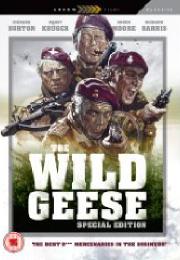
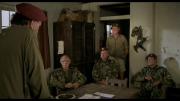
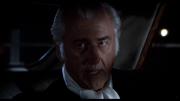
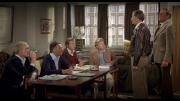

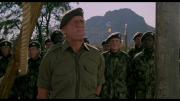
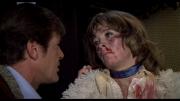
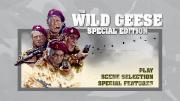
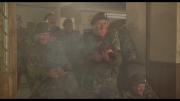
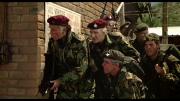
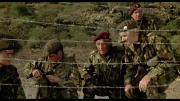
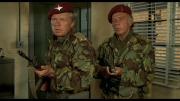
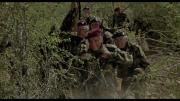
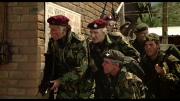
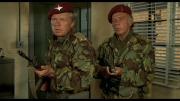
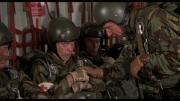































Your Opinions and Comments
Perhaps they chose maroon and brown berets for inconsistency so that General Ndofa wouldn’t be able to accuse the British government of operating in Zembala.